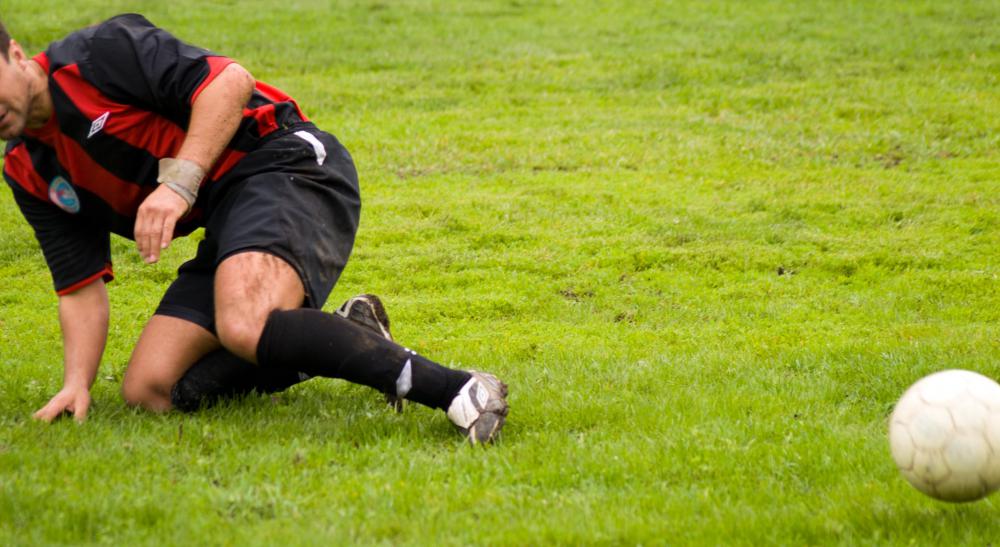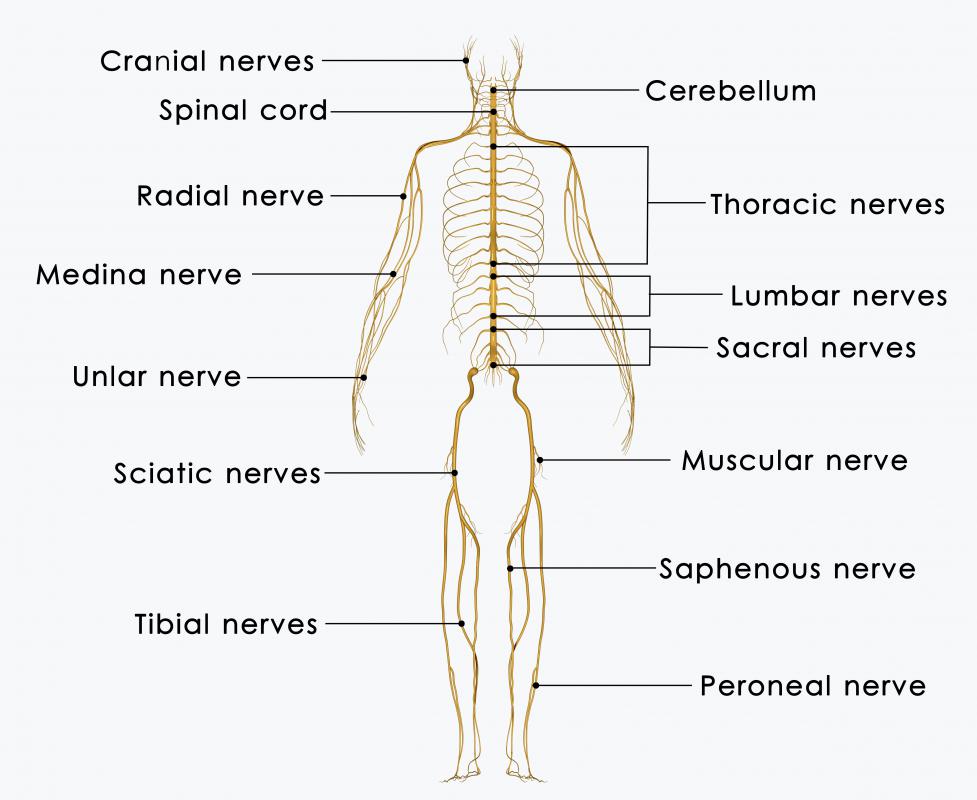At WiseGEEK, we're committed to delivering accurate, trustworthy information. Our expert-authored content is rigorously fact-checked and sourced from credible authorities. Discover how we uphold the highest standards in providing you with reliable knowledge.
What is the Long Thoracic Nerve?
The long thoracic nerve is a nerve that innervates the serratus anterior, a muscle found on the side of the chest. The muscle covers several ribs and wraps around to the scapula, holding the bone in place and providing it with stability. Damage to the nerve or the serratus anterior can lead to a condition known as winged scapula, in which the bone does not lie flat. Depending on the nature of the damage, the condition may not be immediately apparent without a medical examination.
The origins of the long thoracic nerve can be found in the brachial plexus, a bundle of nerves that splits into a number of branches to innervate muscles in the arm, armpit, and chest. Classically, the nerve splits from the fifth, sixth, and seventh cervical nerves in the brachial plexus, although sometimes the roots are only in the fifth and sixth cervival nerves.

This nerve wraps behind the brachial plexus and runs down the chest to fully innervate the serratus interior. This muscle has a series of fingerlike projections which attach to the ribs, causing the nerve to branch considerably as it reaches its destination to fully cover the muscle.
There are a number of ways in which the long thoracic nerve can be injured. One of the most common is trauma, because the nerve sits relatively close to the surface of the skin, making it vulnerable to blows that may be incurred during sports, falls, fights, or car accidents. In addition to trauma, the nerve can also be injured through overextension, in which the nerve is strained during stretching. This may occur when someone is not properly warmed up, or when someone overreaches the comfort zone of a stretch. Certain torture methods such as the use of stress positions can also cause damage to the nerve.

Iatrogenic damage can also be an issue. The term “iatrogenic” is used to describe injury or harm that occurs during the course of medical treatment. While doctors try to avoid making their patients worse while they try to help them get better, iatrogenic injuries can happen. In the case of the long thoracic nerve, surgery on the chest may result in damage to the nerve, classically in the case of axillary node dissection, in which the lymph nodes around a breast cancer are removed.
AS FEATURED ON:
AS FEATURED ON:

















Discussion Comments
I've read that one way that surgeons can reduce nerve injury to the long thoracic nerve that has so many branches and twist and turns, is for more research on mapping out the location of this nerve.
If the surgeon uses a detailed chart of the nerve, he will be better able to avoid injuring the nerve during breast or lung surgery. Those people who have this nerve injured often have lives of difficulty in functioning.
Wow - the way the long thoracic nerve twists and turns in and out with so many branches is a scary thought when you are going in for some kinds of chest surgery. It seems like the surgeon would have to have a real steady hand to keep from injuring this nerve.
Another scary thought is that you might hurt this nerve just by exercising and stretching if you didn't warm up enough. It's pretty close to the surface of the skin.
Then if you get injured somehow, the nerve could easily be injured from a punch or blunt instrument. I don't know what the treatment for this kind of injury is.
Post your comments